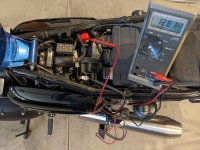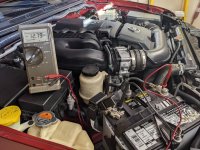Hi All,
Any thoughts on proactive battery replacement? I have a well maintained 4.5 year old battery that has never given me an issue. Knowing average life expectancy and there is little warning when they go wondering if it just better to do it at start of season and wait for failure, jump it, and replace when ride over.
Leaning towards the proactive approach but I have a general aversion to replacing something that works.
Interested in your thoughts, experiences, options.
Thanks All!
Any thoughts on proactive battery replacement? I have a well maintained 4.5 year old battery that has never given me an issue. Knowing average life expectancy and there is little warning when they go wondering if it just better to do it at start of season and wait for failure, jump it, and replace when ride over.
Leaning towards the proactive approach but I have a general aversion to replacing something that works.
Interested in your thoughts, experiences, options.
Thanks All!


